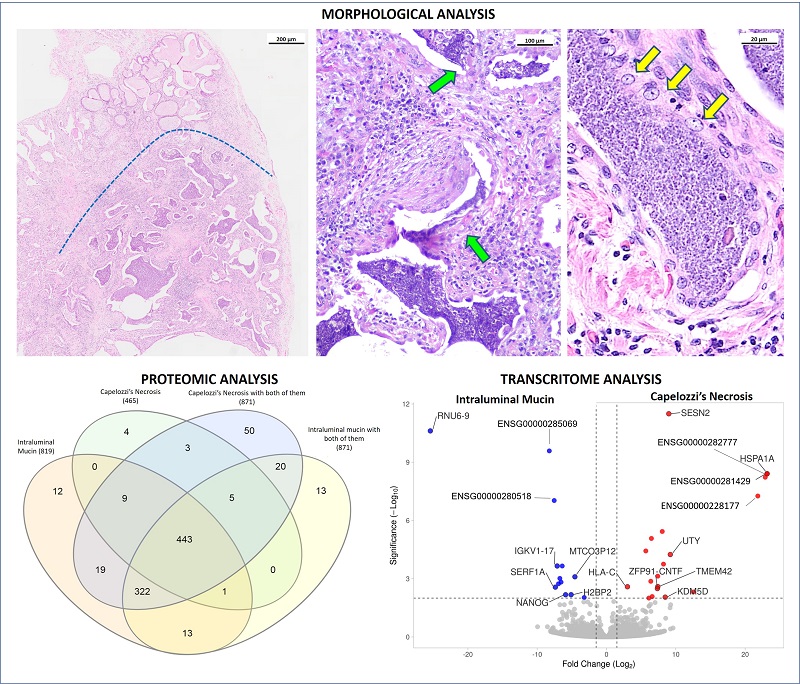Abstract
INTRODUCTION: Capelozzi?s necrosis (CN) is defined as an intraluminal, amorphous and basophilic material similar to the peptic necrosis of gastric ulcers, being observed in fibrosing interstitial lung diseases (F-ILDs) and related to chronic microaspiration (CMA). However, its diagnostic role is not known yet.
AIMS AND OBJECTIVES: To search for evidences between CN and CMA in F-ILDs.
METHODS: 24 surgical lung biopsies with definitive F-ILD diagnosis for CMA or HP or CTDs after MDD by ATS/ERS criteria were selected between 2017-2021. Histological features, proteomic analysis and whole transcriptome were performed.
RESULTS: CN is related to bronquiolar exulceration and adaptive response like squamous metaplasia and miofibroblastic proliferation. Transcriptome showed gene up-expression that could be related to inflammation, immune response and reparation pathways in CMA, like HSPA1A, UTY and TMEM42, confirming our histological findings. Proteomic revealed 5 different animal proteins with at least 3 different peptides and greater than 24 aminoacid sequences each.
CONCLUSIONS: Our results demonstrate strong evidence that part of the CN intraluminal content is of animal origin, supporting CMA as a potential etiological factor of F-ILDs. CN may be a novel and reliable histological biomarker for the diagnosis of CMA in F-ILDs (FAPESP Nē22/02821-0, 21/09024-6, 21/10981-5, 19/01517-3).
